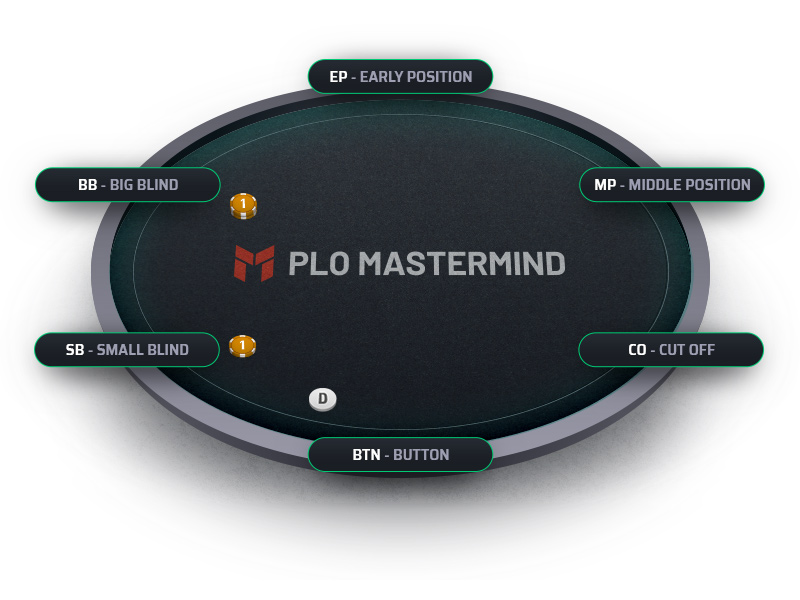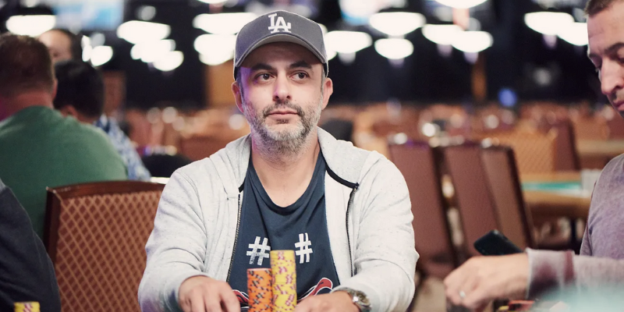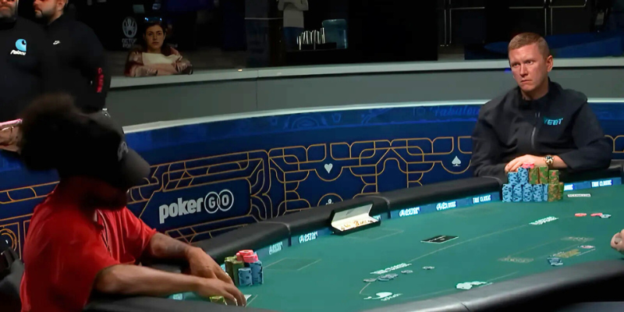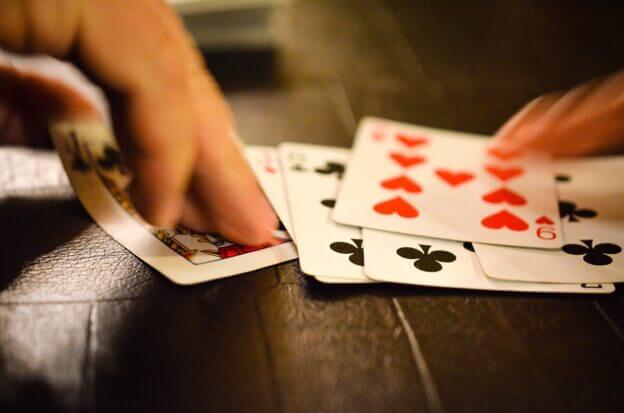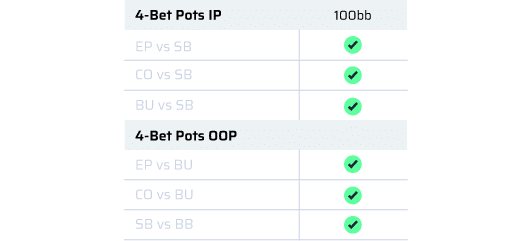This guide on Omaha poker rules covers everything you need to get started. Omaha Poker, mostly played in the Pot-Limit variant, is a poker game in which four face-down cards are dealt to each player, and hands are formed by using two of those cards, in combination with three out of five community cards.
The game’s invention is credited to WSOP bracelet winner Robert Turner, who incorporated it in the Las Vegas Golden Nugget Casino tables in 1982. Since then, Omaha has seen steady growth in popularity, becoming the game of choice for many poker pros and beginners alike.
In this guide, we go through everything you need to start playing the great game of PLO:
Omaha poker has been steadily growing in popularity, both in the live scene and online. Today, it can be found on most casinos and online poker sites.
1. Basic Poker Rules
The purpose of poker is to win money from bets that others are making on the table.
You can do this mainly by having the highest-ranking hand, but also by bluffing, which means placing a bet that represents a stronger hand than what you have and makes your opponents fold their cards, surrendering the pot.
Poker Hand Rankings
Hand rankings are the same across all poker games and represent the strength of a made hand. They are at the center of PLO strategy.
The more difficult the odds to get a specific combination, the higher it will rank. As we’ll see below, in PLO you must use 2 hands from your 4 holecards and 3 from the community board.
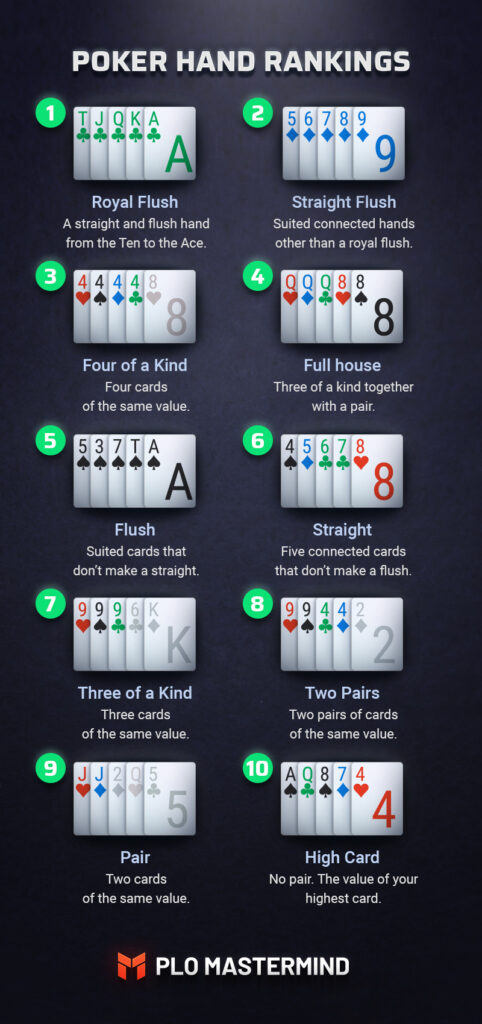
If there are competing hands on the same rank, the one that has the highest value combination will win. If values are equal, the pot is split evenly.
Betting Structures
There are three main betting structures in poker. The structure refers to the maximum amount you can bet or raise at any point in the hand.
- Fixed-Limit – where the betting amount is predefined and doubles on the turn and river.
- Pot-Limit – where the maximum bet or raise is the size of the pot (including your call).
- No-Limit – where you can bet all the chips you have, regardless of the size of the pot.
Omaha betting structures can be either fixed-limit, pot-limit, or no-limit. The most popular variant in Pot-Limit Omaha, which will be used to illustrate the rules.
Actions
There are five actions you can take on your turn in poker.
- Checking – when there are no bets to call, you can pass the action to the next player.
- Betting – when you invest chips and others have to match them or call all-in to continue.
- Folding – when there are bets in place, and you don’t want to continue playing the hand.
- Calling – when you continue in the hand by matching a bet or raise others have made.
- Raising – when there is a bet, and you not only call but add even more chips to the pot.
2. How to Play Pot-Limit Omaha (PLO)
Pot-Limit Omaha rules are similar to Texas Hold ‘Em. The difference is that you get dealt two extra cards (or more, as in 5-card PLO), and that you must to use two cards from your hand to make your hand ranking at showdown.
If you’re already familiar with No Limit Hold ‘Em, make sure to check out our article on the key strategic differences between Omaha and Hold’em.
Streets
A street in poker refers to the stage of a hand within a complete round of actions. Each street starts when cards are dealt. Preflop is the first street, and starts when four face-down holecards are dealt to the players.
Flop, turn and river streets start when face-up community cards are dealt in the middle of the table.
Every street ends with a betting round, so there are four streets and four betting rounds in a full hand of Pot Limit Omaha. Like in all poker games, betting rounds are skipped if all players are already all-in.
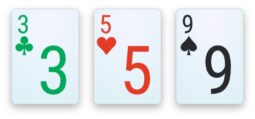


Position
Position refers to your turn to act. The action always moves clockwise, in betting rounds or when moving the blinds on position between each hand. The big blind is always the minimum betting amount, and the small blind is half that same amount.
Some casinos and online poker sites allow players to put additional actions into the game before the cards are dealt, like adding single or multiple additional blinds (at least twice the big blind amount) called straddles and table-wide bets called antes.
In standard games, there is only one small and one big blind, and first person to act before the flop is the early position player. After the flop is dealt, the action starts from the small blind position.
If you are the last player to act post-flop, then you are in position (IP). Otherwise, you are out of position (OOP). There is also relative position, where you are IP over one player, but OOP against another.
When you act later, you get more information from your opponents’ actions. You will be able to use the advantages or have the disadvantages of each different position for all the consecutive streets of a hand.
How to Calculate the Pot in PLO
An essential part of the game is knowing the highest bet allowed. In Pot-Limit Omaha, the maximum bet you can make equals what is in the pot at the time of the action.
Any time a player invests money by betting, calling or raising, the chips are immediately included in the pot size. This means that if you are facing a bet and thinking of raising, you must include your call amount into the size of the pot beforehand.
To summarize, the pot size is defined as:
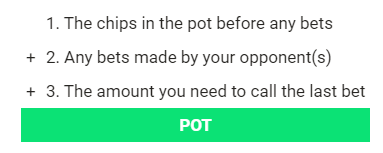
Preflop example:
You are sitting on the button and everyone folds before you. The blinds are $1 and $2, therefore the chips in the pot equals $3. If you are thinking of raising, then you should do the following to calculate the pot:
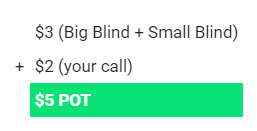
So, you call the $2 Big Blind amount, and additionally raise a maximum of $5. In total, your chip investment will be $7. The Small Blind folds and the Big Blind calls your $7 bet by putting $5 more into the pot.
Postflop example:
Continuing with the same hand example, now the chips in the pot add up to $15 ($7 you + $1 SB + $7 BB call). The flop comes and the Big Blind now bets $10. If you wish to raise the pot, calculate the following:
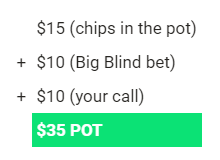
Now your chip investment would total $45, that is a $10 call added to a $35 maximum raise.
Even though the bet is limited to the size of the pot in PLO, you can see how it can rise pretty quickly, sometimes leading to players to invest their entire chip stack and go all-in.
In the following video from our free PLO Basics material, JNandez goes through more examples of how to calculate the pot.
Pot odds
A fundamental part of the game’s strategy is being able to measure the risk/reward of your actions. This is where pot odds come into place.
Pot odds are calculated by dividing the possible winnings (pot) by the amount you will invest (call, bet, or raise). If you have to invest $1 into a $4 pot, then your pot odds at the time will be 4 to 1. So, to be profitable, the odds of your hand winning should be better than that.
As you get a better understanding of the game, you will realize that your decisions will often require much more information than just calculating pot odds. This is where it starts to get really interesting, so make sure to check our article about PLO strategy for more.
Showdown
After the river betting round is the showdown, where players show their cards, and the winner of the hand is established by hand rankings. Always remember: you must use 2 out of your 4 hole cards and 3 from the board to make your hand.
Hands are shown by the river bettor or raiser first, or if no bets were made, in position starting from the small blind. If your hand doesn’t win, you have the option to muck your hand, or in other words, not show your cards to the other players.
In the following video clip, we go through a typical hand example in Pot Limit Omaha.
3. Omaha Hi-Lo Rules
The rules of Omaha Hi-Lo, aka ‘Omaha Split 8-or-Better’ or ‘Omaha/8’, are quite simple. The game structure is the same as regular Omaha poker, with the following exceptions:
- The pot is divided halfway between the highest-ranking hand and the lowest ranking hand. If there’s no qualifying low hand, the high hand wins the entire pot.
- Low hands consist of 5 different cards, ranked 8 or below, to qualify to win the low portion of the pot. you may use different combinations of your hole cards to make your high and low hand.
- Aces can be used as either high or low ranks. Straights/flushes do not affect low hands, but pairs do not count, only 1 card of the same rank is used.
The best possible low hand is A2345 because it holds the 5 lowest possible values, it is also called a ‘wheel’. Making a qualifying low hand that is also a straight or a flush is very powerful because it can potentially win both the high and low halves of the pot. This is called a ‘scoop’.
Conclusion to Omaha Poker Rules
Omaha Poker, particularly Pot-Limit, involves strategic use of four dealt cards to form the strongest possible hand by combining two of them with three community cards. Understanding Omaha poker rules is crucial for beginners and experienced players alike, as the game’s dynamic nature and focus on nuttiness make it distinct from other poker formats. Mastering the nuances of card selection and strategic calibration can help players navigate complex scenarios, ensuring they capitalize on both postflop play and opponents’ weaknesses.

